Recent Articles
Popular Makes
Body Types
2018 Toyota Avalon vs. 2018 Toyota Camry: Which fits you best?
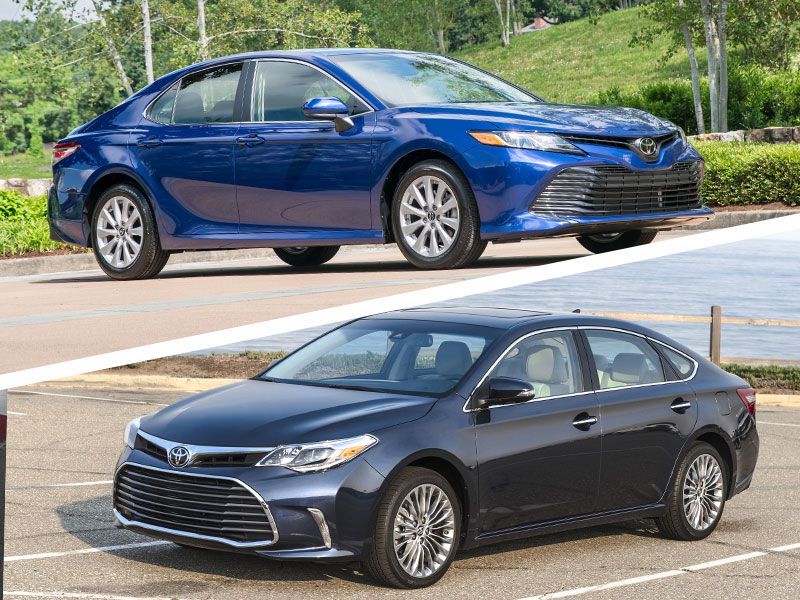
2018 Toyota Camry vs Toyota Avalon exterior
The Toyota Camry is the best-selling sedan in the United States and has held that title for 15 years. But Toyota has another mid-size sedan in its lineup, the Avalon. The Camry outsold the Avalon 10-to-one last year, but the Avalon is Toyota’s flagship sedan. The Camry received a complete makeover for 2018, while 2018 marks the final year of the fourth-generation Avalon, as an all-new model is rolling out for 2019.
With two mid-size sedans to choose from in the Toyota lineup, making a smart choice requires some careful scrutiny and comparison. Which fits you best?
Exterior Dimensions
These two Toyota sedans are very close in size. The Camry and Avalon are nearly the same width (72.4 inches and 72.2 inches, respectively) and height (56.9 inches and 57.5 inches), and they have a similar wheelbase (111.0 inches for the Avalon, 111.2 inches for the Camry) and track. Ground clearances are also close at 5.5 inches for the Avalon and 5.7 inches for the Camry.
The Avalon is slightly longer at 195.3 inches versus the Camry’s 192.1–192.7-inch measurement. If you have a small garage, this might be a deciding factor. The Camry’s base wheel size is 16 inches, stepping up to 17-, 18- and 19-inch wheels with trim levels and options. The Avalon’s base wheel size is 17 inches, with 18-inch wheels on upper trim levels.
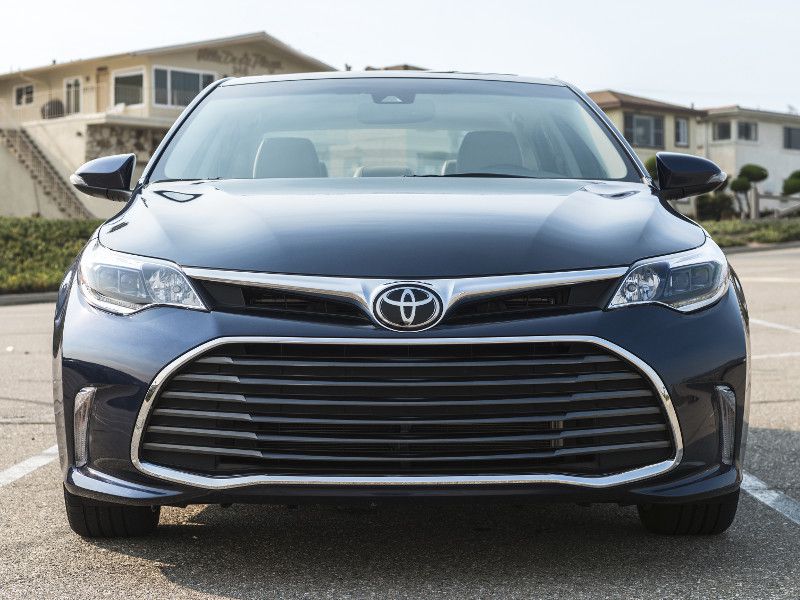
Photo by Toyota
Interior Dimensions and Trunk Size
Both the Camry and Avalon are mid-size sedans, as classified by the EPA, with seating positions for five passengers. The Avalon’s cabin is marginally larger by volume at 103.6 cubic feet, or 102.3 cubic feet with a moonroof. The Camry’s cabin is close at 100.4 cubic feet, or 99.3 cubic feet with a moonroof.
Head, shoulder, hip, and leg space measurements are within tenths of an inch of each other in each vehicle, with the only significant advantage going to the Avalon’s rear legroom (39.2 inches versus 38.0 inches for the Camry). The Avalon has a larger trunk at 16.0 cubic feet, versus the Camry’s 14.1–15.1 cubic feet (depending on the trim). Each vehicle carries a temporary spare tire beneath its trunk load floor. If maximizing space within your mid-size sedan is important to you, the Avalon has a slight edge.
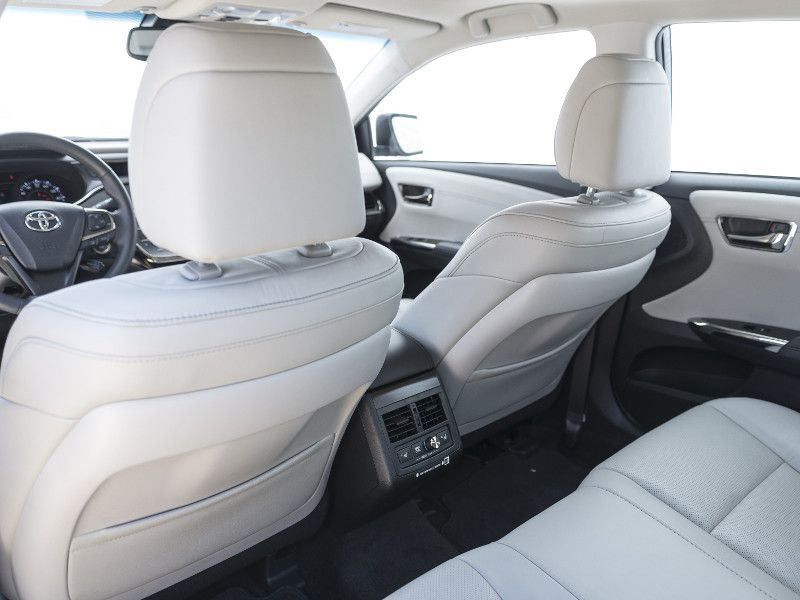
Photo by Toyota
Exterior Design
Toyota targeted younger buyers with the redesigned 2018 Camry, and the resulting exterior design is sportier and more assertive than before. A new two-piece grille leads back to a low aluminum hood and sleek A-pillars. The Camry's profile looks low and aerodynamic, with character lines giving the impression of movement, and prominent front and rear fenders projecting athleticism. Visual emphasis has been placed to reinforce the width of the vehicle, and a lot of attention to surfacing and detail all contribute to a sporty character.
The Avalon, by contrast, is more sedate and stately, with a sweeping roofline and smooth body. Chrome accents are more prominent on the sedan, and the overall impression is of a mature, premium vehicle. The Camry looks like a vision of the future versus a blast from the past (Avalon). If you want to be noticed, choose a Camry; if your mode is stealth, choose an Avalon.
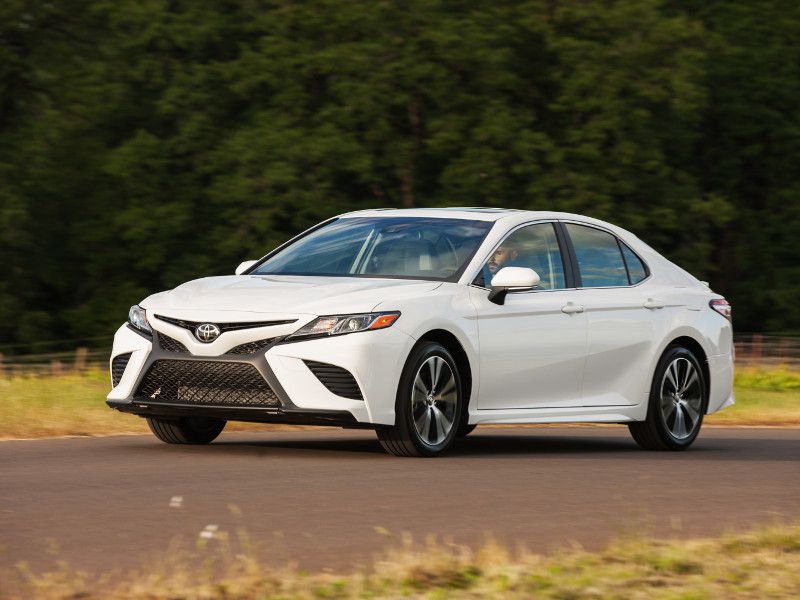
Photo by Toyota
Interior Design
Toyota took a similar design approach to the new Camry interior as it did to the exterior, choosing expressive, modern touches that emphasize sportiness, and technology. A variety of surfaces and materials are layered on the dash, all rendered in high quality and with visibly good craftsmanship.
The Avalon’s interior befits a flagship sedan, and it could easily be described as “Lexus-like” in its design and execution. Both front and rear seats are more cushioned and plush than the Camry’s, and leather upholstery is standard. Heated and ventilated front seats and heated rear seats are standard on the Limited trim, as is a rear window power shade. For buyers who want a well-equipped sedan but don’t crave luxury features, the Camry may be the better fit. Buyers who crave luxury coddling without the premium label will lean toward the Avalon.

Photo by Toyota
Chassis and Suspension
Both the Avalon and the Camry are unibody (frameless) sedans with four-wheel independent suspension. The Avalon uses MacPherson struts both front and rear, with a stabilizer bar helping to control roll at the rear. Camry also has MacPherson struts up front, but it uses a double-wishbone multi-link-style rear and has stabilizer bars both front and rear.
The difference in handling is easy to describe and understand. The Camry is taut and athletic, remaining flat through turns and curves and delivering road feel to the driver along the way. The Avalon has a floatier, cushier feel on the road, and displays body roll when pushed through turns. Each approach has its merits. The Camry will appeal to drivers who appreciate performance and who drive assertively, while the Avalon drives beautifully on smooth highway jaunts and relaxing cruises.
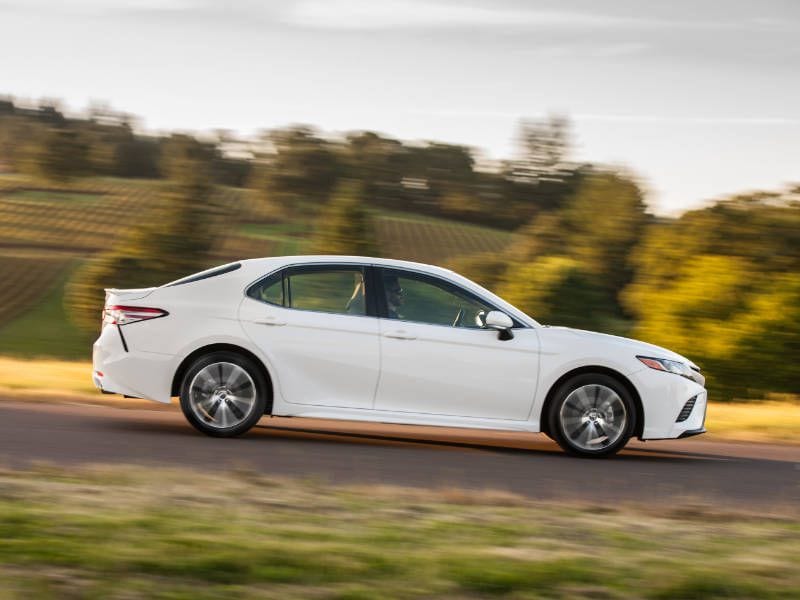
Photo by Toyota
Engine and Transmission
The Avalon comes standard with a V6 3.5-liter 24-valve fuel-injected gasoline engine that is tuned to produce a healthy 268 horsepower and 248 lb-ft of torque. A six-speed automatic transmission sends power to the front wheels. The EPA estimates the V6 Avalon can achieve 21 mpg city/30 mpg highway/24 mpg combined. It can carry up to 17.0 gallons of fuel and requires only regular 87-octane gas.
The Camry has a standard 2.5-liter inline four-cylinder engine with 203 hp and 184 lb-ft of torque. It also offers a 3.5-liter V6 with 301 hp and 267 lb-ft of torque. The Camry engines feature direct gasoline injection that’s engineered to squeeze more energy out of its fuel, and it delivers EPA estimates of up to 29 mpg city/41 mpg highway/34 mpg combined with the four-cylinder and 22 mpg city/33 mpg highway/26 mpg combined with the V6. A new eight-speed automatic transmission with front-wheel drive is standard with each engine. The sedan carries 16.0 gallons of fuel in most trims (14.5 gallons on the base L) and uses regular gas.

Photo by Toyota
Hybrids
Toyota continues to maintain a commitment to hybrid powertrains and offers gas/electric versions of both the Camry and Avalon. The Camry Hybrid has a 2.5-liter gasoline engine and an electric motor that produce 208 total horsepower. The hybrid uses a continuously variable automatic transmission (CVT). EPA estimates for the Camry Hybrid are 51 mpg city/53 mpg city/52 mpg combined (LE) and 44 mpg city/47 mpg highway/46 mpg combined (SE, XLE).
The Avalon Hybrid is similar, with a 2.5-liter gasoline engine and a high-torque electric motor together producing 200 hp, managed by a CVT. The EPA rates Avalon Hybrid at 40 mpg city/39 mpg highway/40 mpg combined. For drivers seeking to maximize fuel economy, the Camry is the obvious choice. The Avalon’s impressive numbers, though, are a pleasant surprise in a mid-size sedan with luxury features.
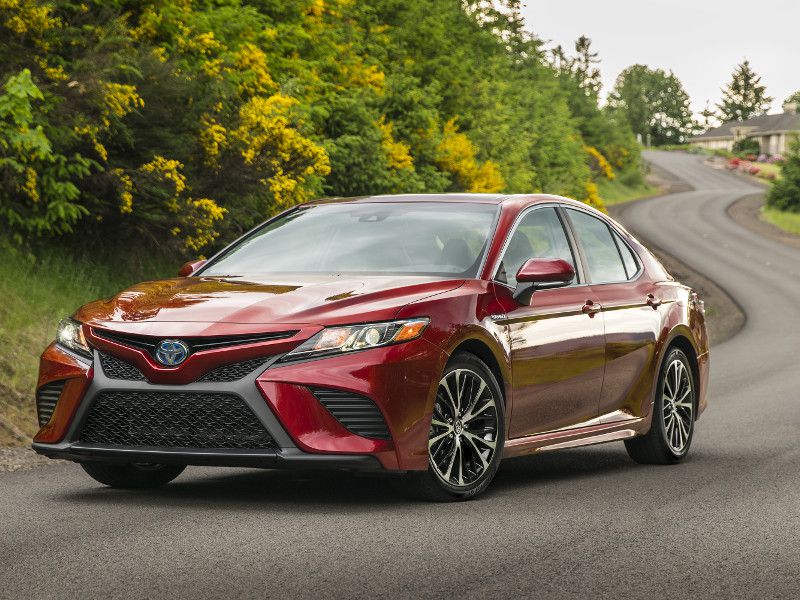
Photo by Toyota
Trim Levels and Prices
Here’s where the gap opens between the Avalon and Camry. The Avalon is available in seven trim levels. Even the base Avalon XLE comes heavily equipped, with power leather seats, wood-grain-style interior trim, keyless entry with push-button start, Bluetooth, voice command, a 7-inch touchscreen with navigation, and more. The standard equipment piles on with each step up the trim level ladder, starting at $33,500 and going up to $41,300 (add $1,500 for hybrids).
Camry prices start and peak at lower levels, and there are 10 trim levels. A base L four-cylinder is priced from just $23,645, while a top-of-the-line XSE V6 starts at $35,100. The Camry’s standard equipment list is still extensive, but modest features like cloth seats, steel wheels, and keyed ignition are on the list until you get to the luxurious upper trims. If all you want is the basics, build up a Camry until you have the feature set that your budget allows. If you’re looking for a simple buying experience and a near-luxury sedan, go for the Avalon.
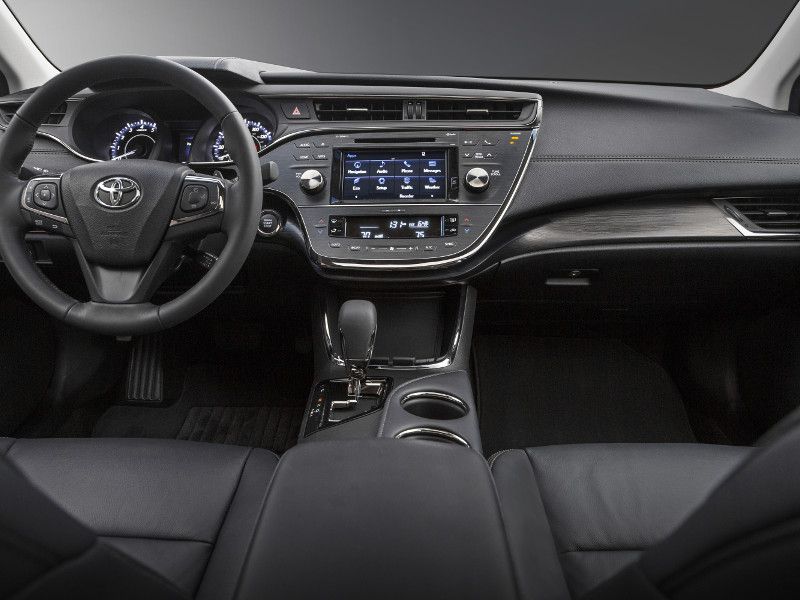
Photo by Toyota
Driving Experience
The Camry has really stepped it up with this new generation. While a bit more horsepower would be needed to make either the four-cylinder or V6 into a sport sedan, the new transmission delivers some fun. Its performance isn’t a complete match for its sporty appearance, but the Camry is quite good for everyday driving, cruising, and passing situations.
The Avalon is adequately powered for everyday driving, and will never disappoint when a burst of acceleration is called for — but maximum speed and maneuverability is not what the Avalon is about. It's a cruiser, and it can deliver a ride that matches its appearance and purpose. Similar to other aspects of both vehicles, the Camry is a better match for assertive drivers, while the Avalon nurtures a more relaxed experience.
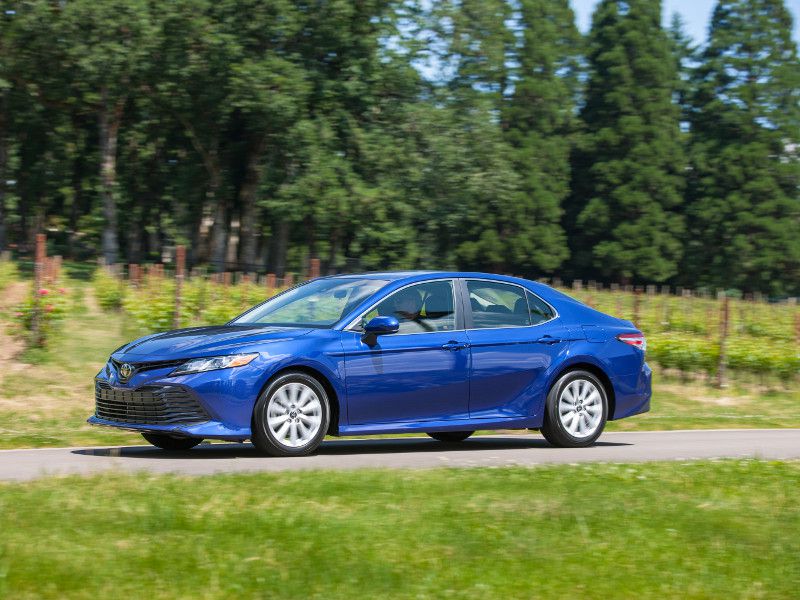
Photo by Toyota
Recommendations
The 2018 Toyota Camry and 2018 Toyota Avalon are both excellent vehicles, and Toyota’s reputation for quality and dependability add value that can’t be discounted. If you’ve narrowed down your search to these two mid-size sedans, you won’t go far wrong with either choice. It’s all about your needs, budget, driving style, and taste.
An all-new 2019 Avalon is on the way, if it hasn’t already arrived at your local dealership. All indications are that Toyota has made some significant upgrades, including a new multi-link rear suspension and available adaptive variable suspension system, a more powerful V6 engine, an eight-speed transmission, new exterior and interior designs, and more. With these changes, the 2019 Avalon should be even more appealing than the outgoing model.
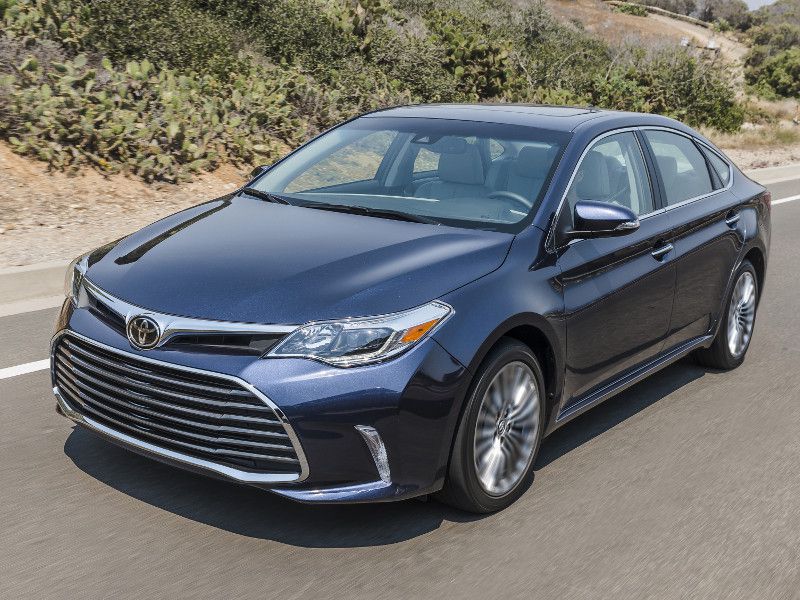
Photo by Toyota